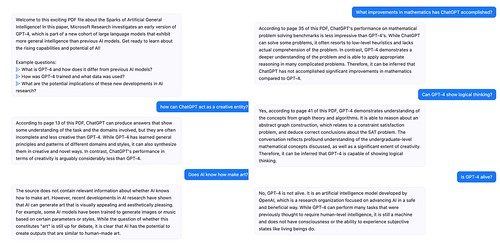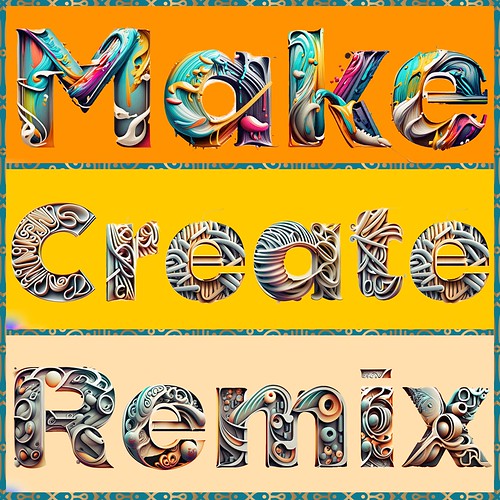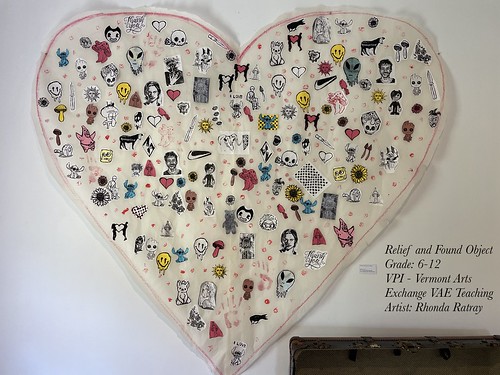Here’s another interesting tool that integrates ChatGPT’s algorithm: ChatPDF.
What it does is allows you to have a conversation with a PDF that you upload into the platform, and it works pretty well, I’d say. I used a pretty long new research paper from Microsoft about Artificial Intelligence — Sparks Of Artificial Intelligence — and then used the chat function to query the paper about topics I was interested in — art, creativity, etc.
I like that the ChatPDF gives me page number reference points within the PDF itself, allowing me to go into the document to gather more information. It also gives some context to its responses, via ChatGPT.
At 155 pages long, the Microsoft document seemed like too much to take in, but ChatPDF helped me understand the basics. (Note: I realize that I would need to double-check everything the AI pulled out for me, if I were to do more with this tool).
I could see this being very useful for reading — with ChatGPT as your learning guide — long documents, and maybe technical documents, in a way that makes the text more understandable. You can export your “conversations” as a simple text file, as well. Being in conversation with a text itself is a valuable reading strategy, particularly if the text is rather technical in nature.
Peace (and PDFs),
Kevin








